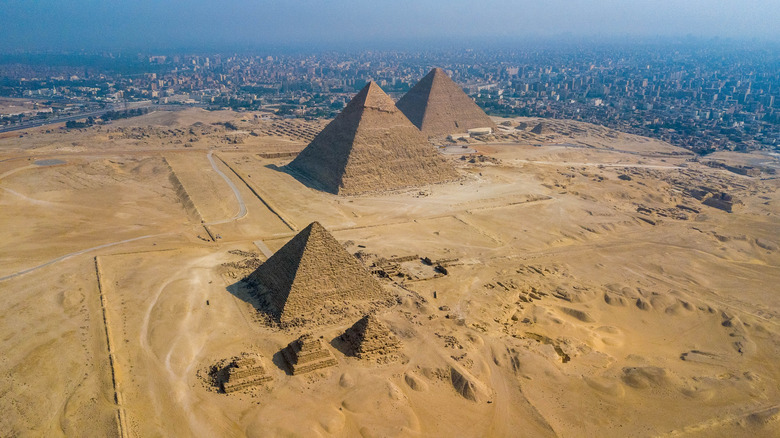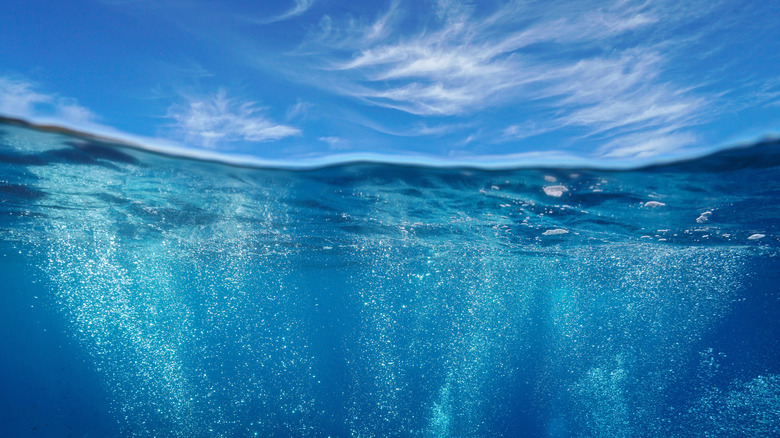The Real Reason We Can't Find The Mythical Sarcophagus Of Menkaure
For thousands of years, the Pyramids of Giza have stood as testaments to the engineering prowess and religious dedication of the ancient Egyptians. Built in the Fourth Dynasty, they were not the first pyramids to be built in Egypt, but they were the largest and served the same function as royal burial sites (yet, some earlier pyramids had no burial chambers). From the 18th to the early 20th centuries, Egyptologists — for better or worse — began seeking out the historic artifacts that these monuments held within.
One of these was the sarcophagus of the Pharaoh Menkaure, which was found within the smallest of the three Great Pyramids in 1837. Despite the destructive use of explosives by English archaeologists to gain entry, the tomb was located (via Lost Treasures of History). The sarcophagus itself was empty, while a separate wooden coffin was also present but contained the remains of an unknown person rather than Menkaure. When the sarcophagus was later placed on a ship (the Beatrice) headed for Britain the following year, it joined the pantheon of historic treasures lost to time (via Live Science).
Menkaure's Sarcophagus may be out of reach
At some point on its voyage from Egypt, the Beatrice sank — likely due to the ship not being designed to handle such heavy cargo. With this disaster, the sarcophagus was lost in spite of Egyptologist Major General Howard Vyse's at least nominal goal of sparing it possible further damage. While none of the surviving crew members were able to identify its resting place, the ship's last known location was Malta (via Archaeology Mysteries).
Though technically the ship could be anywhere on the seafloor, the ship's last known sighting has led many to believe that it sank somewhere near the coast of either Spain or Italy. Its theoretical recovery could be relatively easy given the Mediterranean Sea's generally shallow nature. However, there are locations too deep for retrieval, such as the coast of Cartagena, Spain, meaning that locating the wreck might be all that researchers can do (via David Gibbins).

